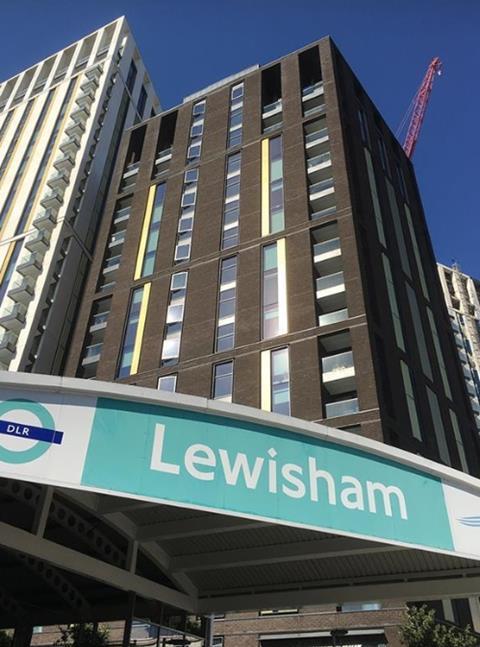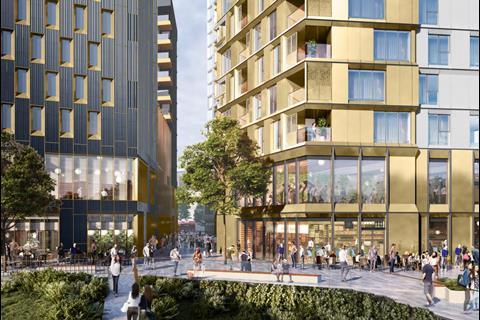Four towers will double the number of residential blocks on the site
Work on building the second phase of the multimillion-pound Lewisham Gateway scheme in south-east London is due to start in the first quarter of next year.
More than 500 new flats are due to be built on the site next to Lewisham railway station. Outline planning was granted last year, with reserved matters planning given in February.
Four new towers designed by PRP ranging from three to 30 storeys in height will be built by Muse alongside a quartet of completed towers completed in 2017, also designed by PRP and built by Muse, Morgan Sindall’s regeneration arm, and which are now occupied.
According to plans lodged with the council the second phase will see a block comprising elements of three, 10 and 12 storeys, one of four storeys, another featuring 16 to 19 storeys, and a fourth comprising 30 storeys.
The quartet of blocks will deliver 530 residential units, comprising 16 studio units, 238 one-bedroom units, 271 two-bedroom units and five three-bedroom units.
There will also be 119 co-living units and communal facilities in the development.
The scheme will also see the construction of retail and mixed-use space, including a cinema, a gym, a hotel and retail space spread along a newly created street dividing the development in two.

The Lewisham Gateway project, proposals for which date back more than a decade, is being built in stages on land next to Lewisham’s railway and DLR stations, which has seen a major rerouting of local roads to accommodate the site.
The site was formerly occupied by a busy roundabout, which was created in the 1990s as part of the council’s road-widening plans for the town-centre redevelopment being undertaken at the time.
The gyratory was removed to allow the Gateway plans to progress.
The second phase of the scheme will also be built on land once occupied by the Lewisham Odeon cinema, which as well as showing films also hosted acts including the Beatles, David Bowie, Status Quo and the Who. The building was demolished in 1991.
The first phase (pictured above) was shortlisted for last year’s Carbuncle Cup competition, run by Housing Today’s sister title BD.















No comments yet